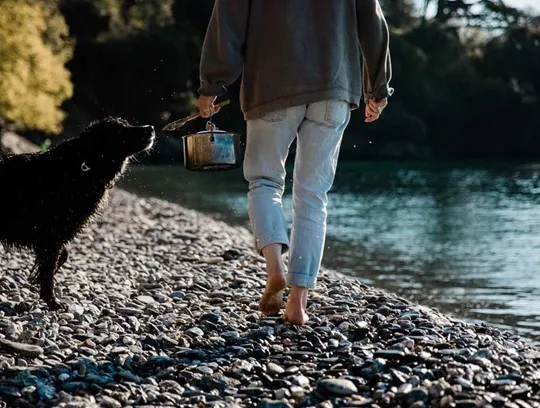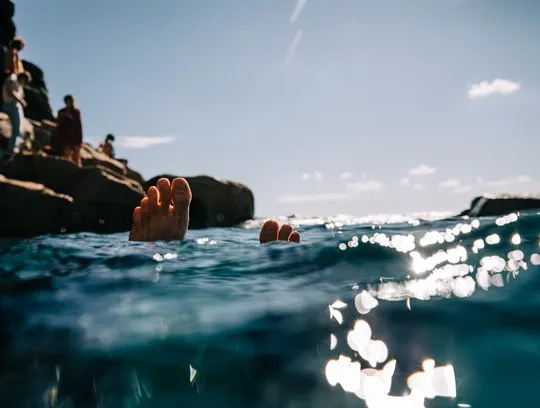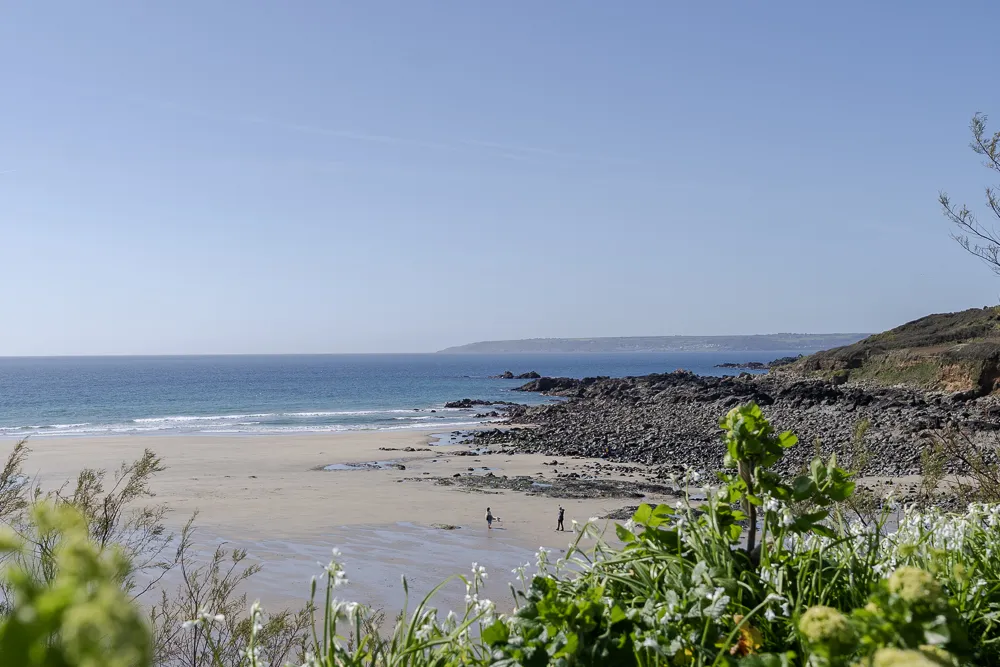Home / Perranuthnoe: land to sea foraging
Perranuthnoe: land to sea foraging
Rachel Lambert is a foraging guide and an author on wild food and cooking. We join her on a walk from Perranuthnoe to experience the land as a forager, seeking different tastes from the hedgerows and on the shore.
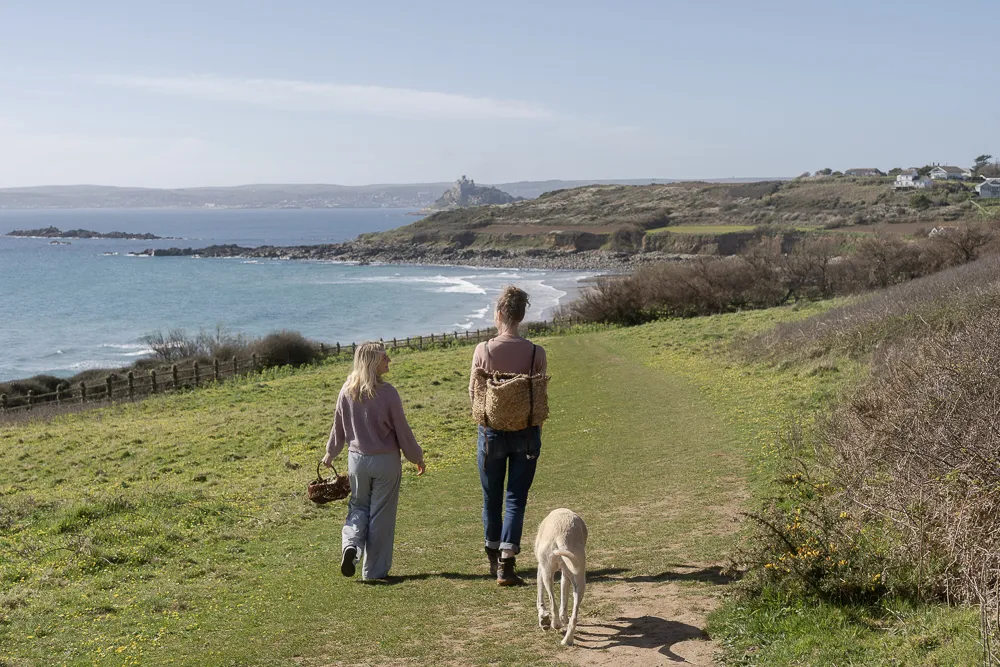
For Rachel, foraging is more than just finding edible plants – it’s about connecting to the landscape. “I got into it because of my own curiosity. You know when something sparks in you and a light goes on and you think ‘oh, this gets my attention’?” she recalls.
A single moment – someone pointing out an edible plant in a hedgerow – ignited a lifelong passion. “I love food, I like walking, I like being in nature, and I like adventure, so it brings all of those things together,” Rachel adds. That passion has evolved into a career of teaching others how to see the land differently. “It’s just great to see those moments happen for other people as well – being able to see things differently and experience new tastes and place those flavours.” Find Rachel’s foraging tips at the end of the article.
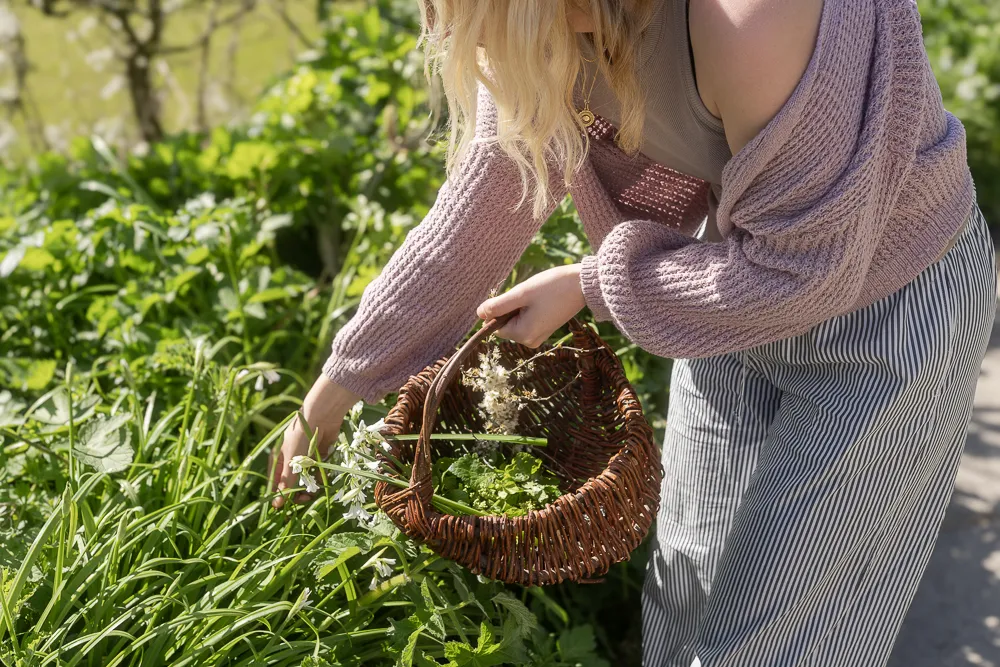
Perranuthnoe, with its soft rolling landscape, makes for an ideal foraging ground. “It’s a really accessible place,” Rachel explains. “It’s right on the coast path so you’re right next to the wonderful, roaring sound – that constant kind of meditative sound – of the sea in the background. You’ve got this lovely mix of hedgerows and field plants buffering into coastal plants and seaweeds as well.”
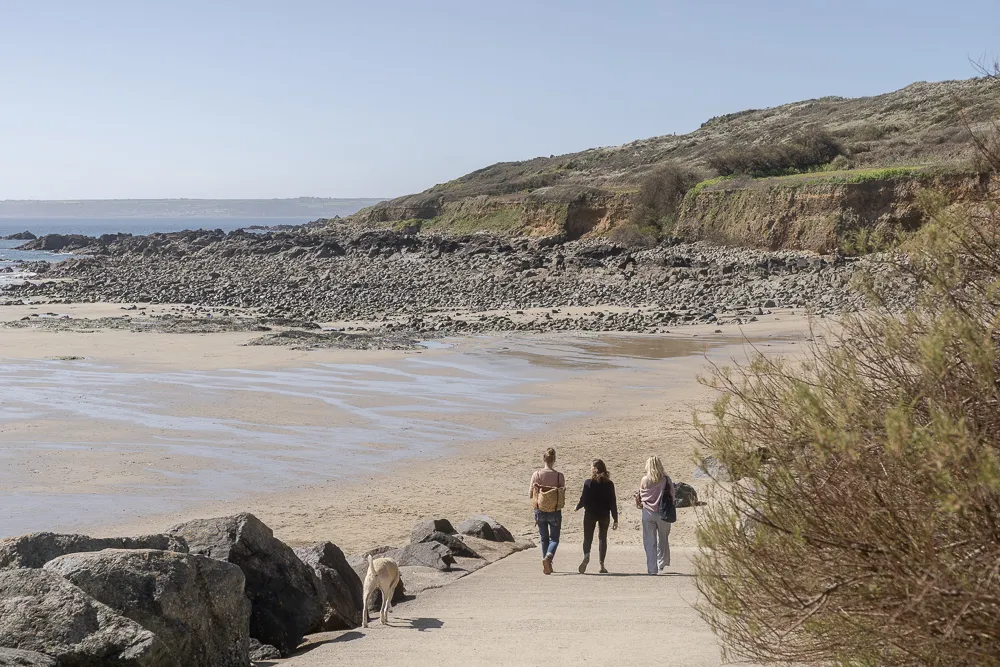
“Seaweed is this stuff we just walk past all the time, and you know it’s this amazing nutritional source. There’s this whole story as well about what the seaweeds give us – nutritionally, oxygen-wise and so much more.”
From the sea
Our foraging experience begins on Perranuthnoe Beach at low tide. It’s one of the largest tides of the year, revealing an expansive shoreline to explore. Rachel leads us towards a cluster of rocks emerging from the golden sand and introduces us to the seaweed there.
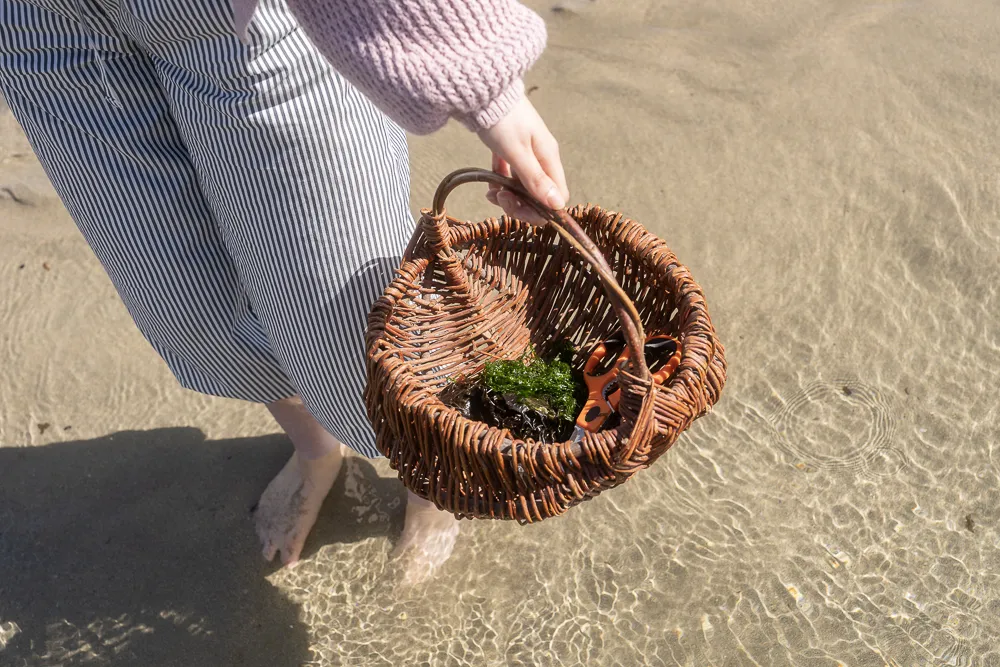
“Seaweed is this stuff we just walk past all the time, and you know it’s this amazing nutritional source. There’s this whole story as well about what the seaweeds give us – nutritionally, oxygen-wise.” More than half of the oxygen we breathe comes from seaweed and other algae. It’s also a nutrient-rich food source, packed with protein and vitamin B12.
On the rocks at Perranuthnoe, Rachel identifies laver seaweed, recognisable by its slightly slimy texture and olive-coloured, rubbery sheets. Rachel explains that many of us know this as nori, commonly used in sushi, while locally it’s known as laver and is used to make Welsh laverbread.
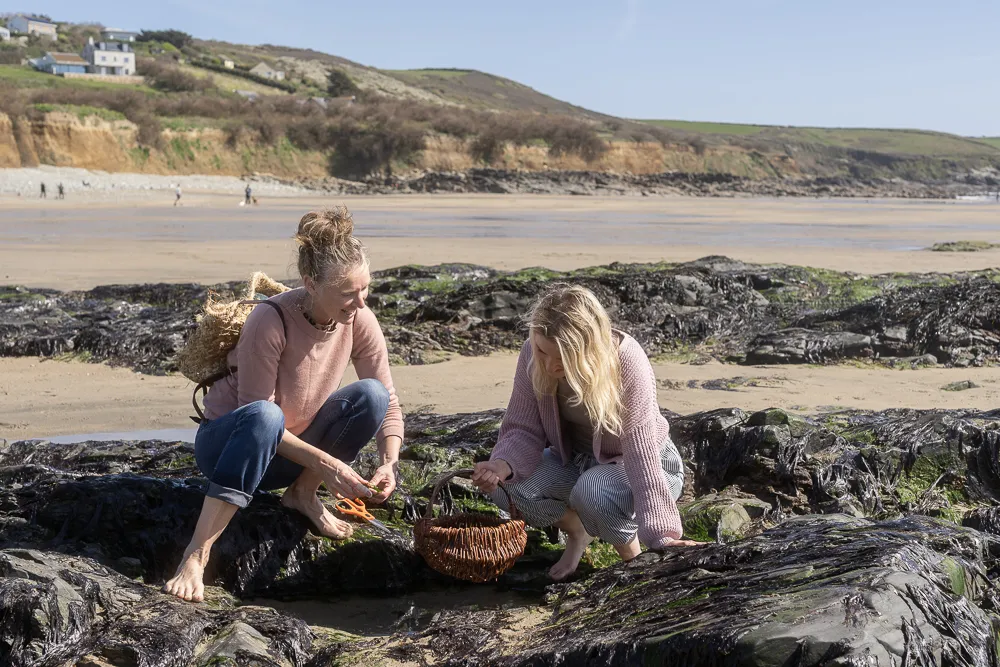
Growing alongside the laver seaweed is gutweed, also known as sea greens. Its bright green strands float in a shallow pool of water, which has sculpted itself into the sand. We carefully cut some strands with scissors to avoid damaging the algae’s delicate roots and inhibiting further growth, placing it into Rachel’s foraging basket.
“This is best to eat crispy, like you get from the Chinese,” Rachel says. Seeing our surprised expressions, she elaborates, “Seaweed is very underappreciated, as are other weeds.” It’s hard to disagree. It’s astonishing to think that these nutrient-rich food sources, so highly valued in other cuisines, are growing abundantly around us.
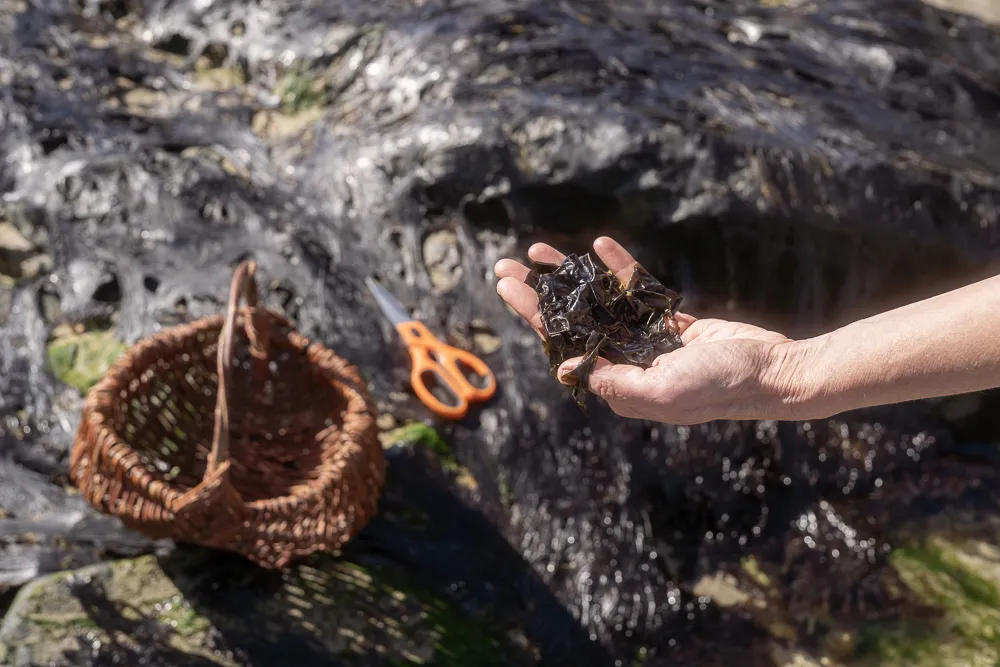
From the coast path
With the spring sun warming our backs, we make our way up the slipway from the beach and join the South West Coast Path, heading east. As the ground gently rises, we are rewarded with breathtaking views of the sea, and soon, the crown of St Michael’s Mount emerges from behind the western cliffs.
“As we lean in, we’re met with the heady scent of coconut. The flowers, though slightly more bitter than blackthorn, have a satisfying crunch. “These can be added to salads or used to make syrups and cordials”.
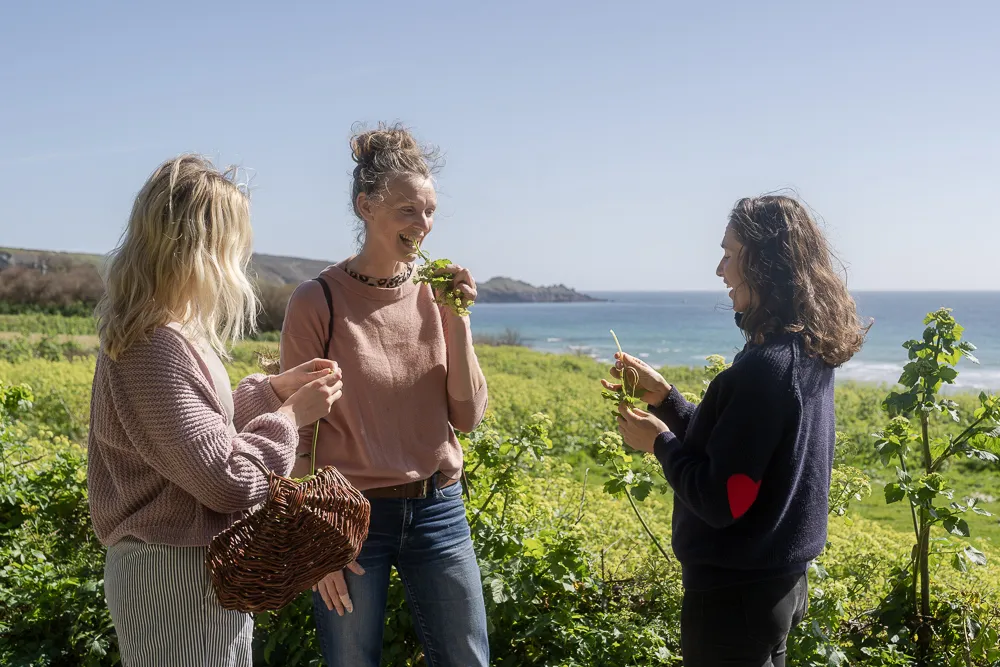
Rachel pauses beside a field and picks out the Alexanders growing there. “I was with a farmer on Friday and he was saying “this is the bane of my life, I can’t get rid of it,” she reveals. “But it is a really important source of nectar for pollinating insects. It was brought over by the Romans as a food because they really rated it, and throughout the year, you can use every single part of the plant.” We peel the stem and taste the Alexanders, which has a flavour reminiscent of both carrot and celery, before continuing along the coastal path to explore the hedgerows.
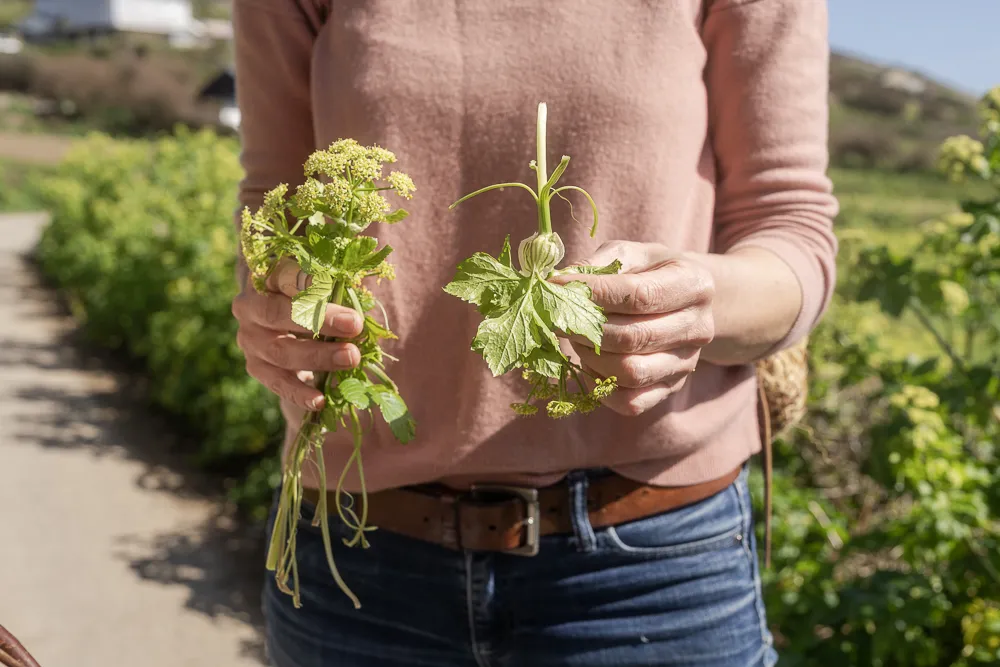
Rachel points to a spiny tree covered in delicate white flowers. While best known for its autumn sloe berries, blackthorn’s almond-flavoured blossoms can be enjoyed in spring. “The flowers can be made into an almondy syrup and added to salads and dishes,” she explains.
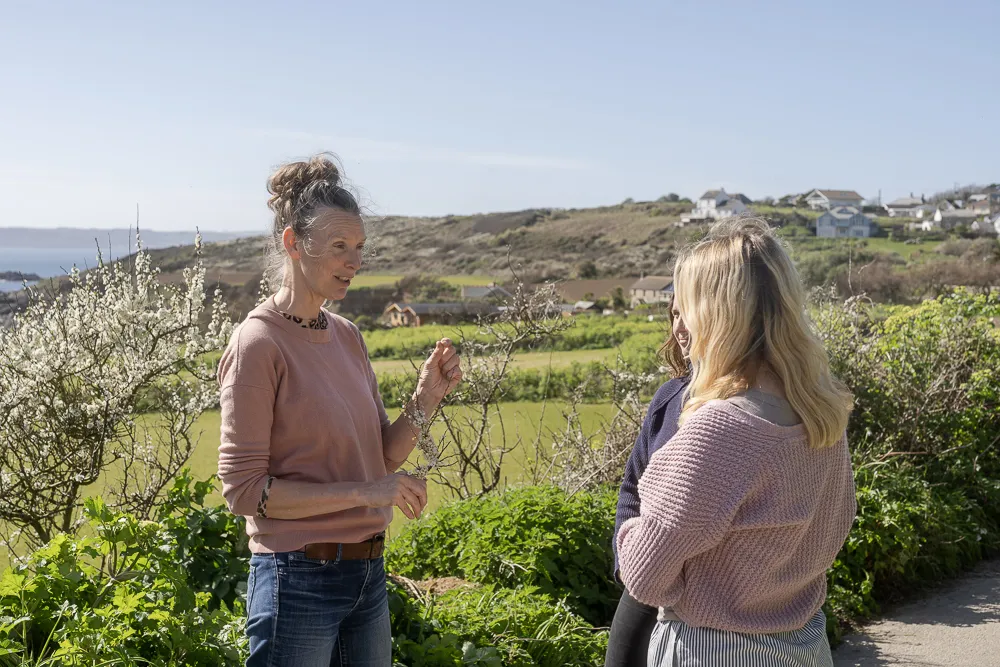
Nearby, we find gorse, another thorny bush, this time bursting with clusters of bright yellow petals. As we lean in, we’re met with the heady scent of coconut. The flowers, though slightly more bitter than blackthorn, have a satisfying crunch. “These can be added to salads or used to make syrups and cordials,” Rachel adds. A recipe for baking with found nettles is at the end of the article.

Turning her attention back to the ground, Rachel plucks a hairy leaf and invites us to identify it by taste. The moment it touches the tongue, a fiery, peppery heat floods the senses. There’s no mistaking the bold, spicy kick of black mustard.
Finally, emerging from the fields onto the low cliffs behind the beach, Rachel introduces us to a patch of glossy, rounded leaves. She explains that this is sea spinach, otherwise known as sea beet. It looks and tastes remarkably like the leafy greens we find in supermarkets, but there’s something unmistakably different about foraging it fresh from the wild – a deeper connection to the land and a sense of amazement at what we can find.
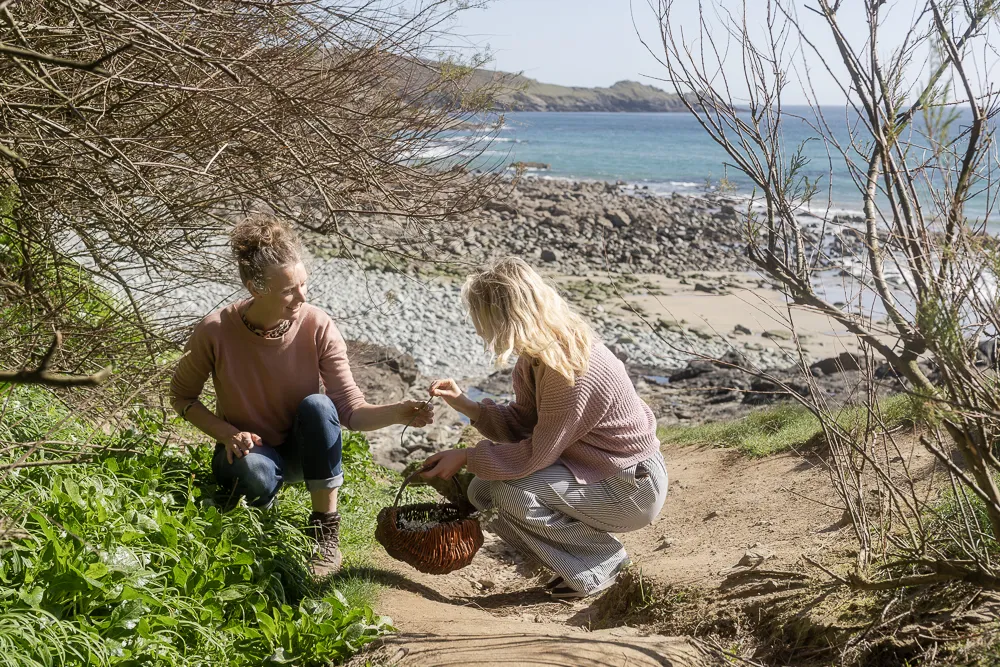
Sustainable foraging
If you’d like to try your hand at foraging, you can look for the same plants we discovered at Perranuthnoe during spring and summer. Here are Rachel’s top tips for sustainable foraging along the coast:
- Take a step back: Look at the bigger picture and see how much of this plant there is before you commit to picking it. Remember other wildlife depends on these food sources too.
- Choose your plants: Don’t pick plants which are rare or protected. There are lots of edible plants which are abundant, but we often view them as weeds!
- Pick plants at the right point: If we pick at the right time, it can benefit the plants. When a plant flowers or seeds are appearing, foraging might inhibit later growth.
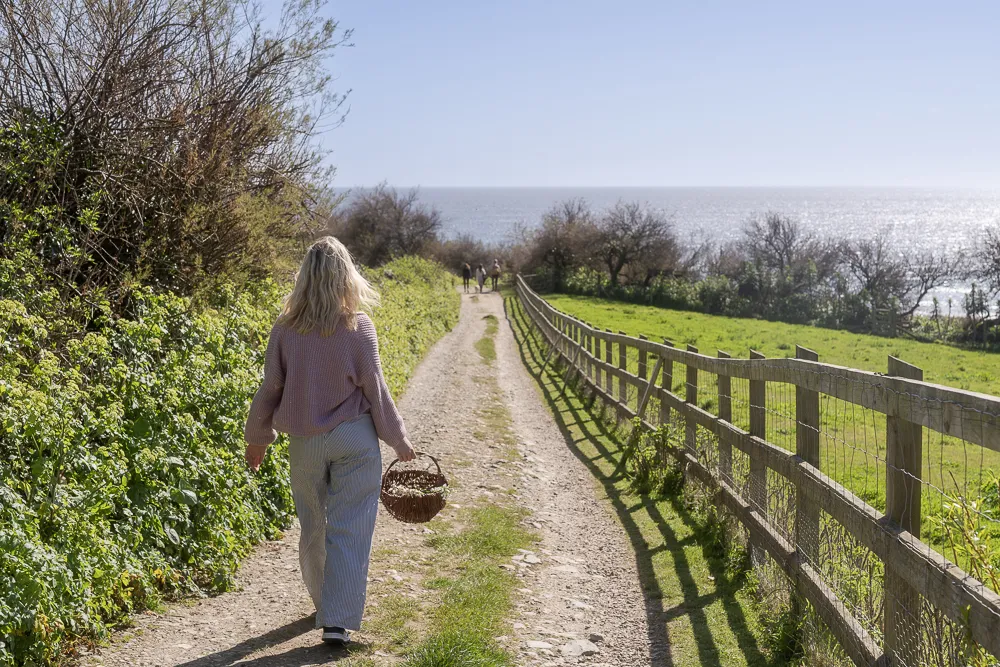
Forage for: Nettle and honey cake
Nettles are easy to recognise and best picked while wearing gloves. Heating denatures the sting, creating a delicious cooking ingredient that Rachel uses in this nettle and honey sponge.
Serves: 12
Ingredients
100g nettle tops
250g clear honey
100g dark muscovado sugar
225g butter
3 large free-range eggs, beaten
300g self-raising flour
Method
- Preheat the oven to 150°C/130°C fan and line a 20cm/8in square or round cake tin with baking parchment.
- Place the nettle tops in a steamer basket over a saucepan of simmering water and steam for 5 minutes, then set aside to cool. Place the honey, sugar and butter in a small saucepan over a low heat and stir until melted and combined, then take off the heat.
- Once the nettles are cooled, add them to a food processor with the eggs (or use a stick blender) and blitz to a smooth, green pulp. Add the flour to a large bowl and gradually beat in the melted sugar and butter mix. It will be a lovely toffee colour. Pour in the puréed nettle and egg mix and beat together until combined into a wonderful green cake mixture.
- Pour into the cake tin and bake for 1 hour, or until a skewer inserted into the centre comes out clean or the cake springs back when gently touched in the centre. Allow to cool for a few minutes before removing from the tin onto a cooling rack. This cake will keep in an airtight container for up to 5 days and also freezes well.
For more recipes, Rachel has published a number of award-winning books on wild foods, including Wild and Sweet – Forage & Make 101 Seasonal Desserts, Wild Food Foraging in Devon and Seaweed Foraging in Cornwall and the Isles of Scilly.
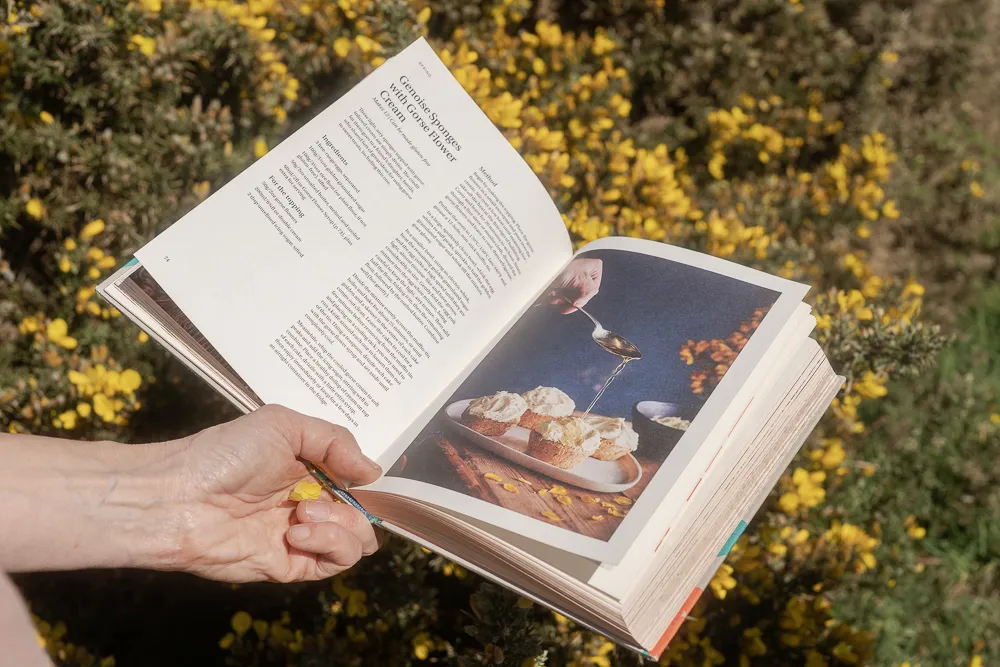
Or, book onto one of Rachel’s foraging courses, including How to forage: Hedgerows, Seaweed Foraging or plant-specific foraging experiences depending on the season.
Your Beach. Found
From the feel of the sand underfoot to the anticipation as you near the sea, your beach is the one that stays with you. Find your beach with the Beach Match Quiz.
Take the quiz
